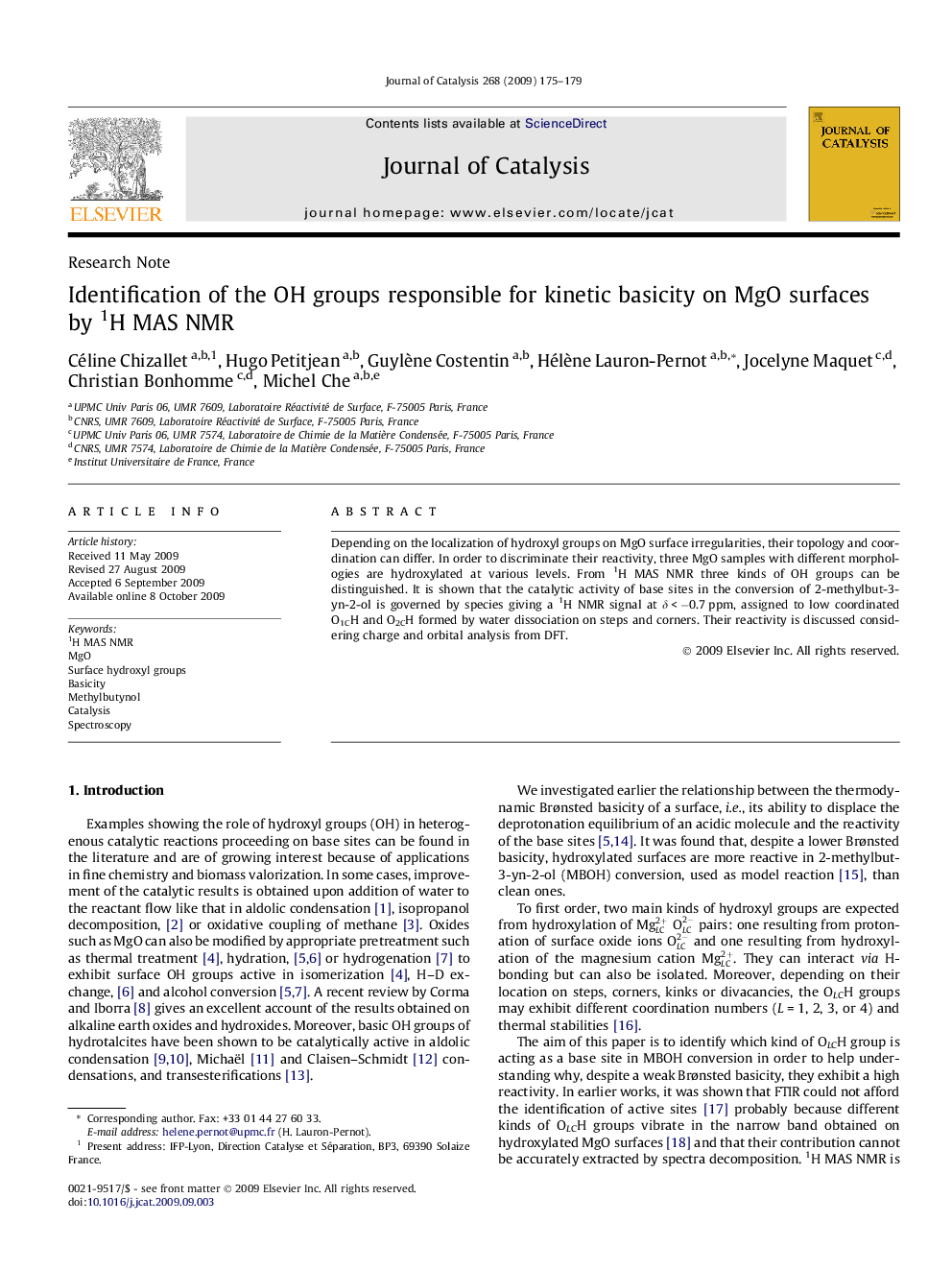| Article ID | Journal | Published Year | Pages | File Type |
|---|---|---|---|---|
| 62505 | Journal of Catalysis | 2009 | 5 Pages |
Depending on the localization of hydroxyl groups on MgO surface irregularities, their topology and coordination can differ. In order to discriminate their reactivity, three MgO samples with different morphologies are hydroxylated at various levels. From 1H MAS NMR three kinds of OH groups can be distinguished. It is shown that the catalytic activity of base sites in the conversion of 2-methylbut-3-yn-2-ol is governed by species giving a 1H NMR signal at δ < −0.7 ppm, assigned to low coordinated O1CH and O2CH formed by water dissociation on steps and corners. Their reactivity is discussed considering charge and orbital analysis from DFT.
Graphical abstractHydroxylated MgO surfaces are very efficient as base catalysts. 1H MAS NMR characterization shows that the OH groups at δ < −0.7 ppm are the active basic sites in the model reaction of 2-methyl-3-butyn-2-ol conversion. From theoretical studies, they are assigned to low coordinated O1CH and O2CH.Figure optionsDownload full-size imageDownload high-quality image (105 K)Download as PowerPoint slide
